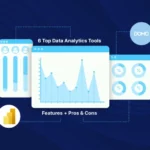Professional electrical contractors differ significantly in their approach to maintenance, with some offering basic inspection services while others provide comprehensive system analysis and preventive care. O’Brien Electrical – Electrical Maintenance Services operates across Australia with a focus on proactive maintenance rather than reactive repairs. Their service model incorporates thermal imaging technology, load testing equipment, and detailed documentation systems that go beyond visual inspections. Industry research shows that comprehensive maintenance programs reduce electrical failures by 75-80% compared to properties receiving only basic or irregular service.
Diagnostic Technology in Modern Electrical Maintenance
O’Brien technicians utilize thermal imaging cameras that detect temperature variations as small as 0.1°C. This matters because electrical problems generate heat before they cause visible damage or failures. Hot spots at connections, breakers, or along wiring indicate developing issues that would otherwise go unnoticed.
Studies by electrical engineering firms show thermal imaging identifies 85-90% of potential failures before they occur. A connection running 15-20°C above ambient temperature will likely fail within 6-12 months, but appears completely normal during visual inspection. This predictive capability prevents unexpected downtime and emergency situations.
Load Analysis and Capacity Planning
Modern maintenance includes measuring actual current draw on circuits and comparing it to rated capacity. Many properties experience gradual load increases as equipment is added without considering cumulative impact. O’Brien’s testing identifies circuits operating above recommended continuous load limits.
Residential circuits should maintain loads below 80% of rated capacity for safety margins. Testing frequently reveals kitchens and laundry areas operating at 90-95% capacity, particularly when multiple appliances run simultaneously. Commercial facilities face similar issues when office equipment, HVAC systems, and lighting upgrades exceed original design parameters.
Connection Integrity and Resistance Testing
Every electrical connection has measurable resistance that should stay within tight specifications. O’Brien’s maintenance protocols include testing critical connections with precision ohmmeters. Standard connections should measure under 0.005 ohms; anything above 0.01 ohms indicates developing problems.
Research published in electrical safety journals confirms that connection resistance increases exponentially as corrosion or loosening progresses. A connection measuring 0.015 ohms will likely reach failure thresholds within 12-18 months. Early detection through testing allows scheduled repairs rather than emergency responses.
Ground System Verification
Proper grounding protects against electrical shock and equipment damage during fault conditions. Ground systems degrade over time as connections corrode and earth resistivity changes with moisture conditions. O’Brien testing measures ground resistance to verify it stays within safe parameters.
Australian standards require ground system resistance below 5 ohms for most installations, with more stringent requirements for specific applications. Testing by electrical engineers found that roughly 30% of ground systems in buildings over 15 years old exceed safe resistance levels. Seasonal variations in soil moisture can double ground resistance during dry periods.
Safety Switch and RCD Testing
Residual current devices require proper testing to verify they trip within specification timeframes. O’Brien uses specialized RCD testers that measure actual trip times and sensitivity levels. The test button on RCDs only verifies the mechanical portion works, not the electronic sensing circuit.
Industry data shows approximately 20% of RCDs over 10 years old fail to meet original trip specifications. Devices might take 45-50 milliseconds to trip instead of the required 30 milliseconds, or require higher fault currents before operating. Only proper testing equipment reveals these deficiencies.
Commercial and Industrial Specific Services
Commercial properties need maintenance programs addressing three-phase systems, larger switchboards, and specialized equipment. O’Brien’s commercial services include busbar inspection, transformer testing, and motor control center maintenance.
Infrared scanning of commercial switchboards often reveals issues invisible during operation. Loose busbar connections, failing breakers, and overloaded phases show up as temperature anomalies. Studies indicate that 60-70% of commercial electrical failures originate in distribution equipment that looked fine during visual inspection.
Documentation and Compliance Management
Proper maintenance creates detailed records of all testing, measurements, and work performed. O’Brien’s documentation systems track equipment age, test results over time, and maintenance history. This proves valuable for insurance claims, safety audits, and planning capital replacements.
Commercial clients particularly benefit from compliance documentation. Regular maintenance records demonstrate due diligence to insurers, regulators, and safety auditors. Properties with documented maintenance programs typically receive better insurance rates and avoid compliance penalties.
Read More: What is Property Maintenance: A Beginner’s Guide?
Emergency Response and After-Hours Support
Even with excellent maintenance, unexpected electrical issues can occur. O’Brien provides 24/7 emergency response across their service areas, with average response times under 90 minutes for critical situations. Having the same company handle both maintenance and emergencies means technicians already know the system and its history.
Emergency call data shows that properties with regular maintenance schedules experience 70-80% fewer emergency situations. When emergencies do occur, they’re typically less severe because the overall system is in better condition. This translates to faster repairs and lower costs compared to neglected systems.



